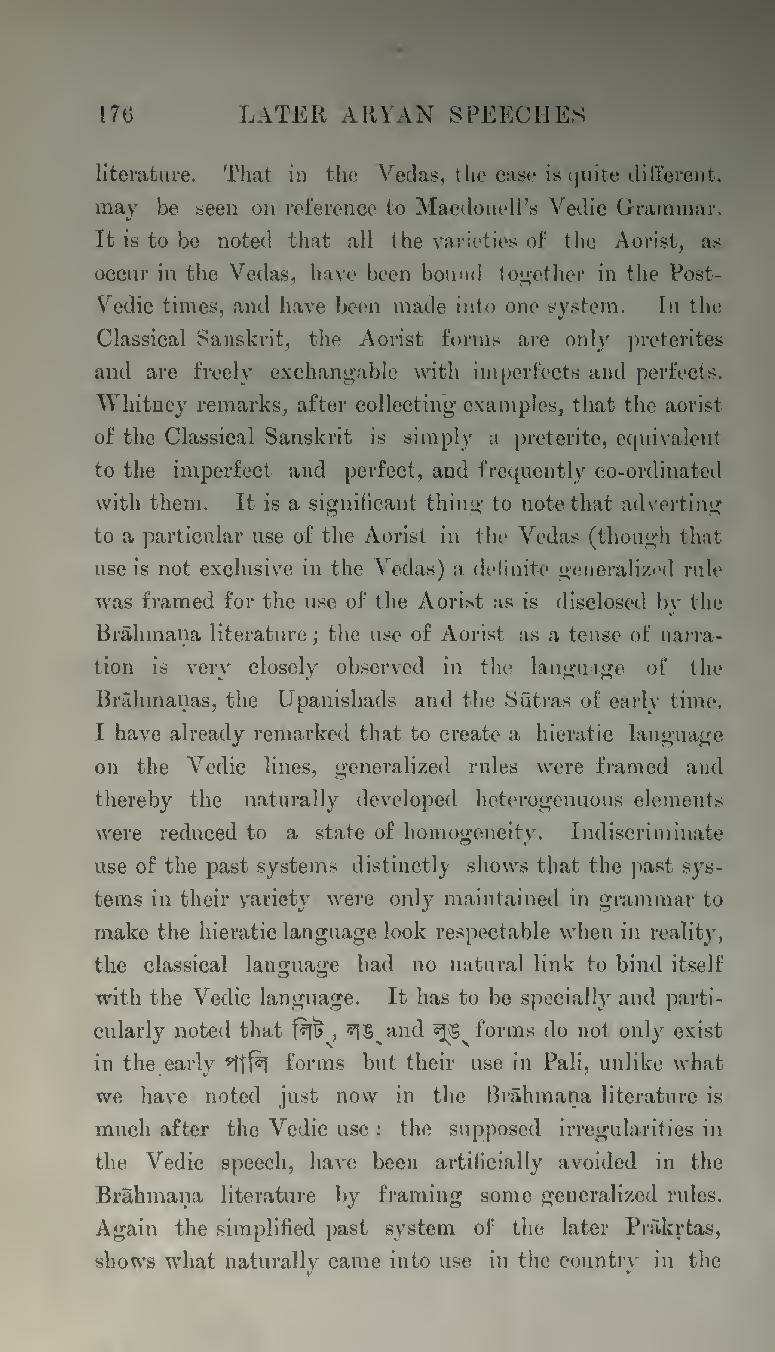literature. That in the Vedas, the case is quite different, may be seen on reference to Macdonell's Vedic Grammar. It is to be noted that all the varieties of the Aorist, as occur in the Vedas, have been bound together in the Post-Vedic times, and have been made into one system. In the Classical Sanskrit, the Aorist forms are only preterites and are freely exchangable with imperfects and perfects. Whitney remarks, after collecting examples, that the aorist of the Classical Sanskrit is simply a preterite, equivalent to the imperfect and perfect, and frequently co-ordinated with them. It is a significant thing to note that adverting to a particular use of the Aorist in the Vedas (though that use is not exclusive in the Vedas) a definite generalized rule was framed for the use of the Aorist as is disclosed by the Brāhmaṇa literature; the use of Aorist as a tense of narration is very closely observed in the language of the Brāhmaṇas, the Upanishads and the Sūtras of early time. I have already remarked that to create a hieratic language on the Vedic lines, generalized rules were framed and thereby the naturally developed heterogenuous elements were reduced to a state of homogeneity. Indiscriminate use of the past systems distinctly shows that the past systems in their variety were only maintained in grammar to make the hieratic language look respectable when in reality, the classical language had no natural link to bind itself with the Vedic language. It has to be specially and particularly noted that লিট্, লঙ্ and লুঙ্ forms do not only exist in the early পালি forms but their use in Pali, unlike what we have noted just now in the Brāhmaṇa literature is much after the Vedic use: the supposed irregularities in the Vedic speech, have been artificially avoided in the Brāhmaṇa literature by framing some generalized rules. Again the simplified past system of the later Prākṛtas, shows what naturally came into use in the country in the
